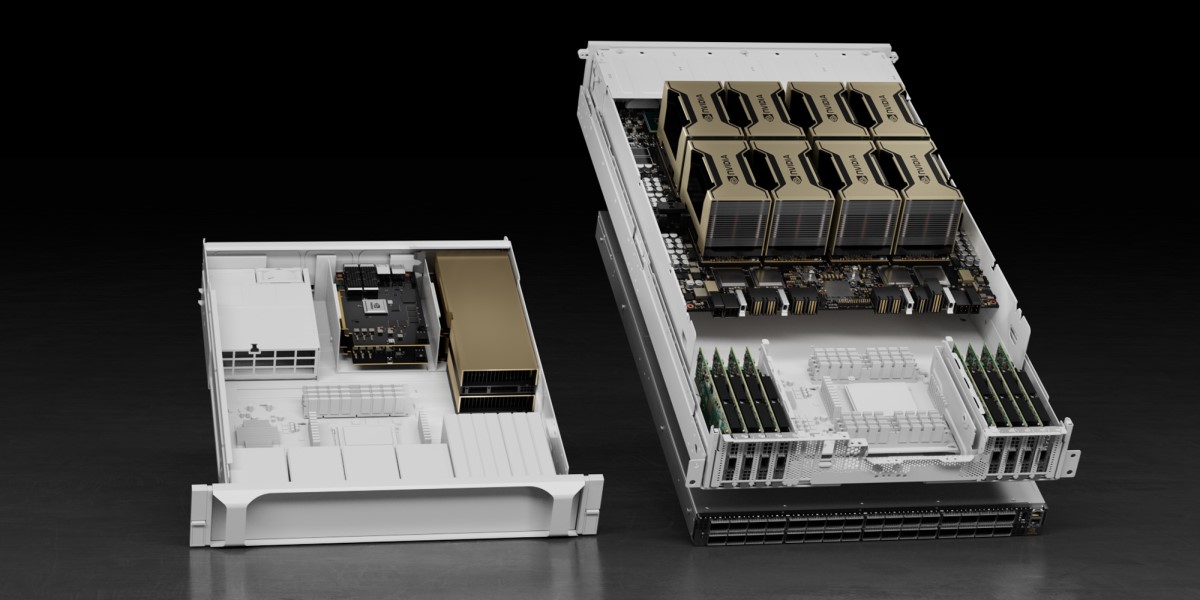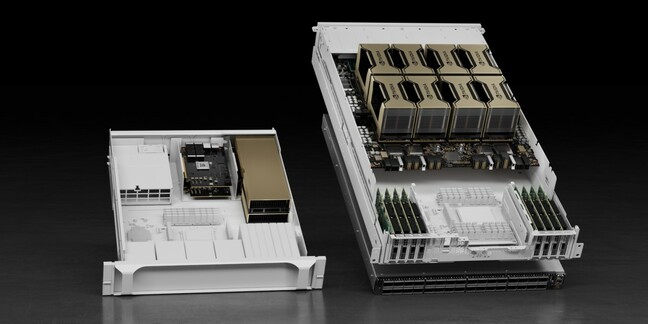Nvidia Adds Arm Support To Its 5G Kit, And A 16-core BlueField DPU To Speed Up Edge, HPC

Mobile World Congress Nvidia has decided to bet on both Arm and x86 platforms for the 5G edge, with a new data processing unit – aka SmartNIC – that packs 16 Arm cores.
The forthcoming BlueField-3 A100 will include 16 Arm Cortex A78 processors but will be happy working inside Intel-powered or Arm-flexing servers.
Wherever it runs, Nvidia feels it has sufficient compute power to serve in software-defined 5G base stations and handle their network function needs so that server CPUs can be left to do other work.
Nvidia's vision is also for those base stations to include its small form factor EGX GPUs, and for those units to be pressed into service running AI applications.
To help things along, the company's Aerial software platform has been imbued with a 5G RAN.
Just why the 5G edge needs AI wasn't explained to The Register. Maybe that's why Google Cloud and Nvidia have decided to create a joint AI-on-5G lab to explore the opportunities.
Nvidia has also advanced the BlueField-3 A100 as a fine choice for high-performance computing (HPC), for which the company has introduced a new A100 80GB PCIe GPU. The new machine boasts 2TB/s of memory bandwidth and 80GB of HBM2e high-bandwidth memory.
Also for HPC types, Nvidia has introduced 400GB/s InfiniBand switches and the new "Magnum IO GPUDirect Storage" that offers direct memory access between GPU memory and storage.
- Now that China has all but banned cryptocurrencies, GPU prices are falling like Bitcoin
- Arm freezes hiring until Nvidia takeover, cancels everyone's 'wellbeing' allowance
- Xilinx pops a 16-core 64-bit Arm system-on-chip from NXP into its latest FPGA-based 100Gbps smart NIC
- Intel adds a new device – the ‘IPU’ – to its must-have modern data centre stack
- Nvidia dips its toes into IaaS with subscriptions for DGX SuperPOD AI supercomputers
- Nvidia says microservices will drive a SmartNIC into every server
The combination of the BlueField-3 A100 and the other new kit is said to improve Nvidia's HGX supercomputing platform so it can propel humanity into a fourth industrial revolution that will use AI everywhere to produce a future filled with unicorns, rainbows, and general cleverness.
The University of Edinburgh has bought in: Nvidia announced HGX will power a new super there called "Tursa", a machine described as allowing researchers "to carry out the ultra-high-precision calculations of the properties of subatomic particles needed to interpret data from massive particle physics experiments, such as the Large Hadron Collider."
Nvidia folk who explained all this new stuff to The Register patted themselves on the back for having recognised the potential DPUs offer to both 5G and HPC. When we first considered DPUs in September 2020, The Register noted that they are a fine idea but that integrating them into actual production systems was not for the fainthearted.
Nvidia has taken big strides towards ensuring that its platforms, at least, are utterly DPU-friendly. ®
From Chip War To Cloud War: The Next Frontier In Global Tech Competition
The global chip war, characterized by intense competition among nations and corporations for supremacy in semiconductor ... Read more
The High Stakes Of Tech Regulation: Security Risks And Market Dynamics
The influence of tech giants in the global economy continues to grow, raising crucial questions about how to balance sec... Read more
The Tyranny Of Instagram Interiors: Why It's Time To Break Free From Algorithm-Driven Aesthetics
Instagram has become a dominant force in shaping interior design trends, offering a seemingly endless stream of inspirat... Read more
The Data Crunch In AI: Strategies For Sustainability
Exploring solutions to the imminent exhaustion of internet data for AI training.As the artificial intelligence (AI) indu... Read more
Google Abandons Four-Year Effort To Remove Cookies From Chrome Browser
After four years of dedicated effort, Google has decided to abandon its plan to remove third-party cookies from its Chro... Read more
LinkedIn Embraces AI And Gamification To Drive User Engagement And Revenue
In an effort to tackle slowing revenue growth and enhance user engagement, LinkedIn is turning to artificial intelligenc... Read more


